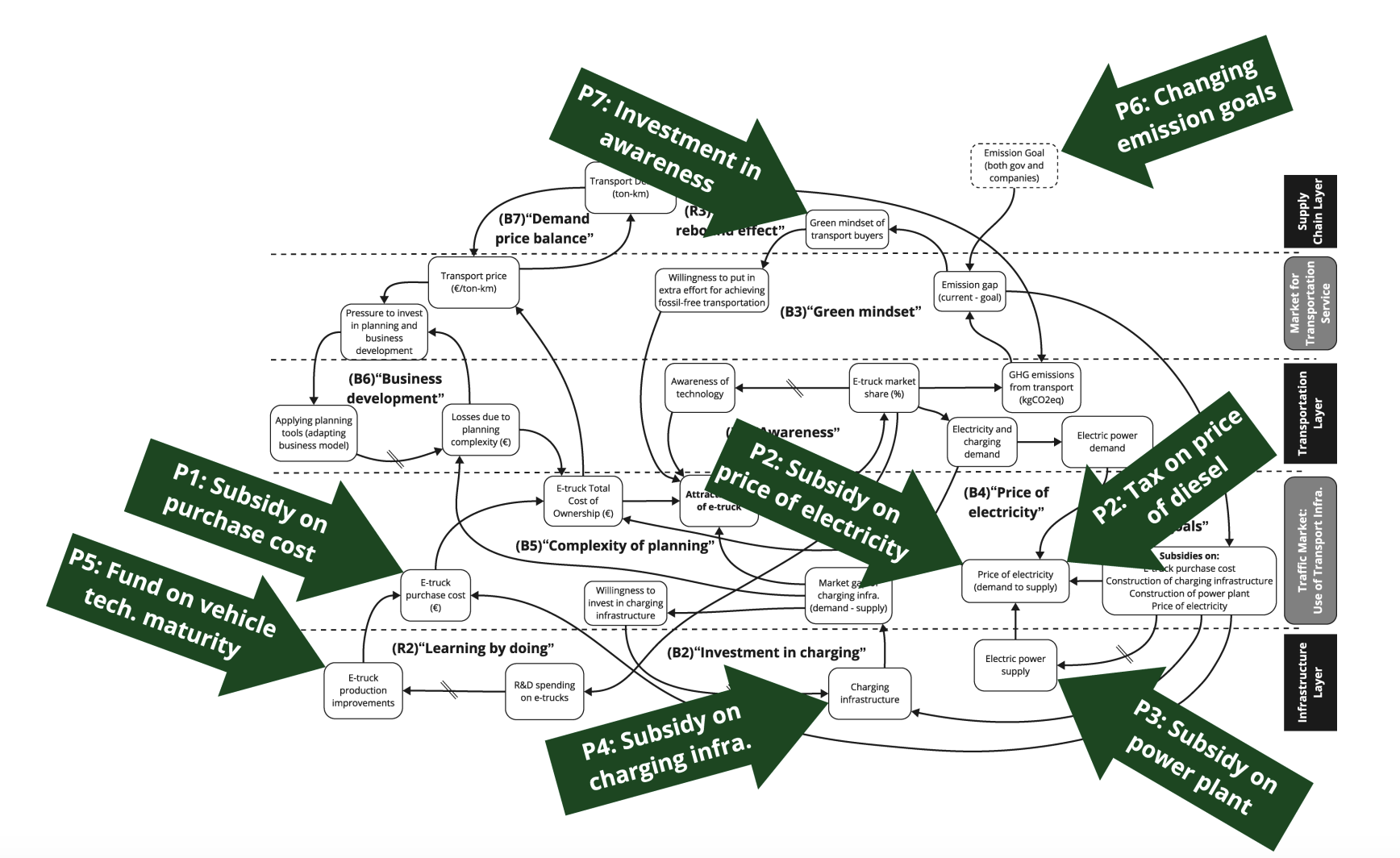Electrification offers a promising pathway for decarbonizing the road freight transport system. Assessing the impact of electrification on the road freight transport system requires understanding the dynamics from a system-level perspective.
Isolated technical or financial analyses, such as comparing the total cost of ownership between electric and diesel trucks, are helpful but only reflect limited actors’ perspectives. To gain deeper insights, we need a transition from linear thinking to system thinking, viewing freight transportation as a complex, dynamic system.
A recent study’s primary methodological contribution is integrating a multi-layer model with system dynamics methodology. It employs a mixed-methods approach, incorporating group model building, impact analysis, and a thorough literature review.
The research introduces a conceptual multi-layer dynamic model that maps out the complex causal relationships among variables across different system layers, highlighting how electrification influences these interactions. It identifies both direct and induced impacts and potential policy interventions. Two causal loop diagrams (CLDs) are developed to offer actionable insights: one examines factors affecting the adoption of electric trucks. At the same time, the other explores the trade-off between battery size and fast-charging infrastructure requirements.
This study provides stakeholders, particularly policymakers, with a system-level understanding of electrification’s diverse impacts and cascading effects. This perspective is critical for making informed, strategic decisions to facilitate the transition to a sustainable road freight transport system.

The study identifies several potential policy interventions to enhance the adoption of e-trucks:
- Subsidies on e-truck purchase costs reduce total cost of ownership (TCO), increasing e-truck appeal.
- Subsidies on electricity prices lower operational costs, reduce TCO, and boost attractiveness, while diesel taxes make e-trucks a more competitive alternative.
- Subsidies for power plant construction increase electricity supply, decrease electricity prices, and lower e-truck TCO.
- Subsidies for charging infrastructure help address infrastructure gaps, improving e-truck viability.
- Funding for vehicle technology development enhances production technologies, reducing e-truck purchase costs and TCO.
- Stricter emission goals encourage e-truck adoption by addressing environmental targets, such as the EU’s “Fit for 55” package and Sweden’s 2045 carbon neutrality goal.
- Awareness programs promote a green mindset among transport buyers and freight companies, motivating sustainable transport choices.
These interventions collectively aim to make e-trucks more economically and environmentally attractive.
These interventions collectively aim to make e-trucks more economically and environmentally attractive.
